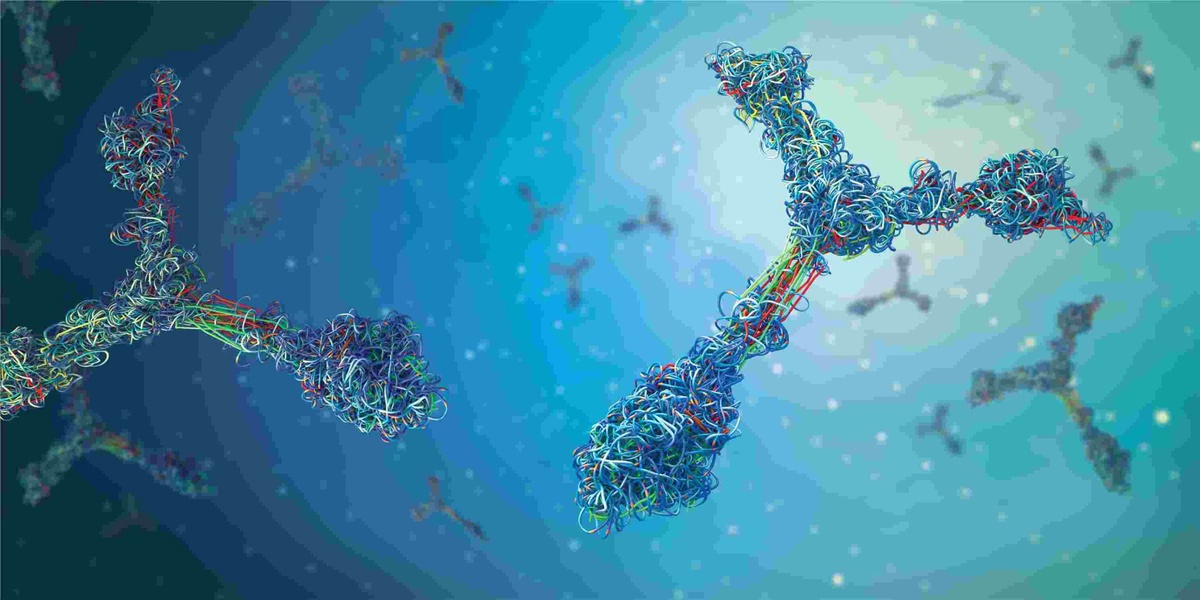Average drug-to-antibody ratio (DAR) and drug load distribution are two vital properties of antibody drug conjugates (ADCs). Over the years, several ADC bioanalytical methods have been developed to better estimate these properties for early development and routine quality control applications. In this article, we provide an overview of the most widely used methods for the detailed analysis of DAR in these molecules.
Ultraviolet-Visible (UV/Vis) Spectroscopy
UV/Vis spectroscopy is a simple and convenient method to determine protein concentrations as well as the average number of drugs that are conjugated to the antibody in an ADC. This method requires that the UV/VIS spectra of the drug and antibody have different Amax values. The average DAR can be determined by using the measured ADC absorbance and the extinction coefficient of mAb at Amax and the extinction coefficient of drug at Amax. Currently, this technology has been widely used in the detection of various cytotoxic ADC drugs, such as maytansinoid DM1, methotrexate, CC-1065 analogues, adriamycin, doxorubicin, calicheamicin analogues and vc-MMAE.
Hydrophobic Interaction Chromatography (HIC)
HIC is an analytical technique for separating molecules based on differences in their hydrophobic properties. Currently, HIC is considered as the standard technique for studying drug distribution, naked antibody content, and average DAR of cysteine-conjugated ADC products. Since the disulfide bond of lysine-conjugated ADCs is not opened by drug loading, lysine-conjugated ADCs elutes with HIC, and a major peak will appear in the chromatogram, which cannot characterize DAR and drug distribution. However, HIC can elute intact cysteine-conjugated ADCs, DAR can be directly characterized by peak area.
Reversed-phase Liquid Chromatography (RPLC)
RPLC is mostly frequently used to estimate the average DAR. The main difference between HIC and RPLC is that proteins are denatured under RPLC conditions. Therefore, cysteine-conjugated ADCs cannot be eluted intact owing to the disruption of interchain disulfide bonds between the L and H chains of the mAb. RPLC is mostly used to separate the DAR species of reduced ADC related to H and L, but can also be applied on the native antibody drug conjugates (ADCs) to separate L, H, HH, HL and HHL fragments. In RPLC, interaction with the stationary phase is mediatedpredominantly through hydrophobic interactions between the nonpolar amino acid residues of proteins and the immobilizedn-alkyl ligands. Solutes are eluted in their order of increasingmolecular hydrophobicity.
Liquid Chromatography Masss Pectrometry (LC-MS)
LC-MS has been widely used for ADC analysis. Preprocessing is required for ADC analysis using LC-MS, and several recent studies have focused on optimizing preprocessing in LC-MS. For example, deglycosylation by peptide-N-glycosidase F (PNGaseF) is generally used to eliminate the complexity of peak appearance. Using the reducing agent DL-dithiothreitol (DTT), heavy and light chains of the ADC were obtained, and alkylation is generally used after reduction to prevent the re-formation of disulfide-linked structures. Considering the method and integrity of proteins, protein characterization by LC-MS is further divided into four types, as shown in Fig. 4. Among these methods, middle-up and middle-down are more suitable for ADC analysis.
Capillary Electrophoresis-Sodium Dodecyl Sulfate (CE-SDS)
SDS is mainly used to separate ADCs with intact or H and L chain forms. Unlike size exclusion chromatography, SDS can also be used to separate sFc and Fd fragments. When CE-SDS is applied for lysine-conjugated ADCs, it separates loaded H or L chains because of the disulfide bridge interaction. However, the main peak is the intact antibody represented by H2L2, accounting for about 96%. In contrast, when cysteine-conjugated ADCs are analyzed, intact H2L2 comprises only 8.1%. Therefore, CE-SDS cannot be used to characterize the DAR of hinge cysteine-linked ADCs. In general, CE-SDS can be used to determine lot consistency of ADC conjugates.


No comments yet